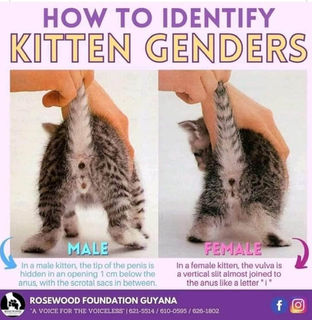

Kittens
Found a baby kitten and don't know what to do? Let's fix that!
(Note: Any time you find a baby kitten outside, the VERY first thing you should do is wait several hours before you intervene. Check out this page from Ally Cat Allies about the proper way to assess whether a kitten truly needs help or whether (more likely than not) the best thing you can do is to leave the kitten where it is for its mother to continue care.).
IF several hours have passed and there is no sign of a mama cat, OR if the kitten is clearly sick, dirty, or otherwise in immediate danger, then--and ONLY then--should you intervene.
Be aware that by choosing to intervene, you are quite literally taking that kitten's life into your hands. This means you will need to be prepared to care for the kitten for at least a few hours while you seek help from someone more experienced.
If no one more experienced is available, then YOU will need to be ready to learn a whole lot of information very quickly in order to keep that kitten alive. Most crucially:
-
Make sure to keep the kitten warm. Never, ever feed a cold kitten - this can kill them.
-
Never EVER feed a kitten cow's milk - ONLY feed them kitten replacement formula (available at Walmart or any pet supply store like PetSmart or Petco). If you are unable to get to one of those places, make a post on our Facebook group asking for emergency supplies to see if anyone can help. While you work on getting formula, you can give the kitten a few drops of karo syrup, honey, or sugar water to keep their blood sugar up.
-
If a kitten is under 3 weeks old, you're going to need to help it pee and poop. This isn't as scary as it sounds: you just need to take a tissue and gently rub their genital/anal region. Doing so mimics a mama cat's tongue and encourages the kitten to pee/poop.
Here are some "crash course" resources to keep bookmarked:
-
How to Determine a Kitten's Age: https://www.kittenlady.org/age
-
Heat Sources for Kittens: https://www.kittenlady.org/heatsources
-
How to Bottle Feed a Kitten (including how much, how often, tips for tricky bottle babies and more!): https://www.kittenlady.org/bottlefeeding
-
How to Help Baby Kittens Pee and Poop: https://www.kittenlady.org/stimulating
-
How and Why to Weigh Kittens (VERY VERY IMPORTANT!!!): https://www.kittenlady.org/weighing
-
How to Set Up Space for Foster Kittens: https://www.youtube.com/watch?v=AUFsGUtTvTc
-
How and When to Wean Kittens Onto Wet Food: https://www.kittenlady.org/weaning
-
How and When to Introduce a Litter Box: https://www.kittenlady.org/litter
All of these resources are from Hannah Shaw, aka Kitten Lady. Her website and YouTube channel are FANTASTIC resources for all-things kitten - definitely check them out if you're wanting to learn more. She also has several webinars (all free to watch!!!) that I highly recommend, including: "Caring for Itty Bitty Bottle Babies", "Beyond the Bottle: Caring for Growing Kittens", "Assessing Kitten Health", and more. You can find her webinars here.
We highly recommend joining the Facebook group, Orphaned Kitten Bottle Feeders and Fosters. It's a fantastic world-wide resource for getting help quickly on a variety of kitten-related topics.
So there you go! Now you have a handy-dandy post to come back to when you find a kitten outdoors.
TL;DR - Do not move a baby kitten from where you found it without waiting for mom to come back and continue care. If you MUST intervene, use the resources on this post to make sure you're providing adequate care.
Info courtesy of Kayla McLaughlin





How to Tell the Difference Between Male and Female Cats
1. Check the Genital Area
-
Males: Greater distance between anus and genitals (about 1 inch or more). Testicles may be visible.
-
Females: Genitals are closer to the anus (less than 1/2 inch apart). No visible testicles.
2. Look for Behavior
-
Males: May exhibit territorial spraying or more aggressive behaviors.
-
Females: Tend to be more nurturing, especially if they’ve had kittens.
3. Physical Size
-
Males are generally larger and more muscular than females.